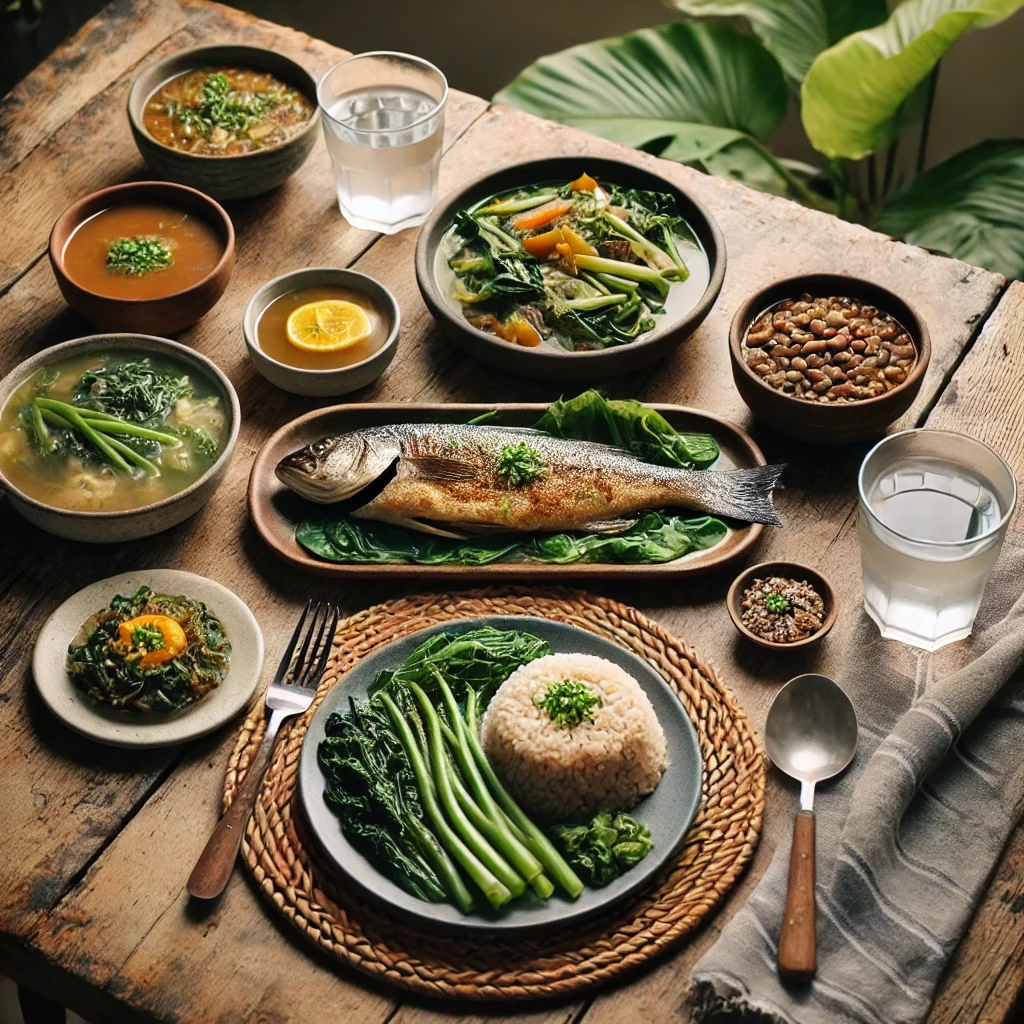
Introduction:
Filipino food is rich in flavor, culture, and tradition-but is it healthy? Many believe that eating healthy is expensive or that traditional Filipino meals are inherently unhealthy. The truth is, with the right approach, you can enjoy nutritious, well-balanced meals while sticking to a reasonable budget. This guide will walk you through practical meal planning, the connection between diet and rest, and how to make the most of every peso without sacrificing taste or nutrition.
The Filipino Diet: Tradition Meets Nutrition
Filipino cuisine is often criticized for being too oily, salty, or high in carbohydrates. While some dishes do lean in that direction, the reality is that many traditional Filipino meals are naturally balanced with protein, vegetables, and complex carbohydrates. It’s all about portioning, ingredient choices, and preparation methods to make meals healthier.
Healthy Filipino Dishes You Already Know
- Sinigang – A perfect blend of protein (pork, shrimp, or fish) and vegetables (kangkong, string beans, eggplant, and gabi).
- Pinakbet – A nutrient-dense vegetable dish with squash, ampalaya, eggplant, and bagoong for flavor.
- Tinola – A comforting chicken soup with malunggay leaves, papaya, and ginger, packed with vitamins and minerals.
- Ginisang Monggo – Protein-rich mung beans with malunggay, tomatoes, and sometimes fish or pork.
- Laing – Taro leaves cooked in coconut milk, rich in fiber and good fats.
By simply adjusting ingredients and portions, Filipino meals can become even more nutritious without losing their identity. Adding kangkong, pechay, or malunggay to any vegetable dish is a great way to stretch your budget while boosting nutrition. These greens work well with most Filipino dishes, and while they may slightly alter the taste, they still maintain the dish’s essence.
Planning Balanced Filipino Meals
A well-balanced meal includes protein, fiber, healthy fats, and carbohydrates. Here’s how you can structure a nutritious Filipino plate:
1. Prioritize Protein
Instead of making rice the star, center your meal around lean protein sources:
- Fish (tilapia, bangus, galunggong)
- Lean pork cuts (pork tenderloin, kasim, or lean ground pork)
- Chicken (preferably without skin)
- Eggs and tofu as affordable, protein-rich options
2. Balance Your Carbs
Rice is a Filipino staple, but portion control is key. You don’t have to cut it out-just reduce the amount and mix in other carbs:
- Brown or red rice for more fiber and nutrients
- Sweet potatoes or saba bananas for variety
- Half-rice, half-vegetable approach to lessen carb intake
3. Load Up on Vegetables
Most Filipino dishes already include vegetables, but increasing portions is an easy way to boost nutrition:
- Add more leafy greens like malunggay, kangkong, or pechay.
- Use local, in-season vegetables to save money.
- Make a habit of stir-frying or steaming veggies instead of deep-frying.
The Role of Rest in Nutrition
Many people focus only on diet but forget that rest plays a huge role in digestion, metabolism, and overall well-being. Poor sleep can lead to overeating, cravings for sugary or salty food, and slower metabolism. Here’s how you can optimize both:
- Eat lighter meals at night to promote better sleep.
- Avoid caffeine late in the day to prevent sleep disruptions.
- Prioritize recovery meals, especially after physical activity, to fuel the body effectively.
Budget-Friendly Healthy Eating Tips
Eating nutritious food doesn’t mean spending a fortune. Here’s how to make your budget work without sacrificing health:
1. Buy Local & Seasonal
- Local vegetables and fruits are cheaper and fresher.
- Buy in bulk at wet markets (palengke) instead of supermarkets.
2. Cook at Home More Often
- Home-cooked meals are significantly cheaper than takeout.
- Cooking in batches saves both time and money.
3. Reduce Food Waste
- Learn to repurpose leftovers into new dishes.
- Store food properly to extend freshness.
4. Swap Expensive Ingredients for Cheaper Alternatives
- Brown rice instead of quinoa-just as healthy but more affordable.
- Tilapia or galunggong instead of expensive salmon.
- Malunggay instead of imported greens-it’s packed with nutrients and practically free if you grow it at home.
- Kangkong, pechay, or malunggay can replace pricier vegetables in most dishes, providing added nutrition without breaking the budget.
Turning Point:
Eating healthy as a Filipino doesn’t mean giving up the flavors and meals you love-it’s about making small, smart adjustments. By planning balanced meals, incorporating more vegetables, controlling portions, and making budget-friendly choices, you can enjoy nutritious, affordable, and satisfying meals that align with your health goals.
Closing Thought:
Food is meant to nourish, not burden. You don’t need an expensive diet plan to eat well-our traditional Filipino dishes already offer a strong foundation for a healthy lifestyle. With small tweaks in preparation and budgeting, you can eat delicious, nutritious meals while keeping your finances in check.
Healthy eating should be practical, enjoyable, and sustainable-and with these strategies, it can be all three.

Pingback: The Truth About Fat Loss: Why Most Diets Fail & What Actually Works